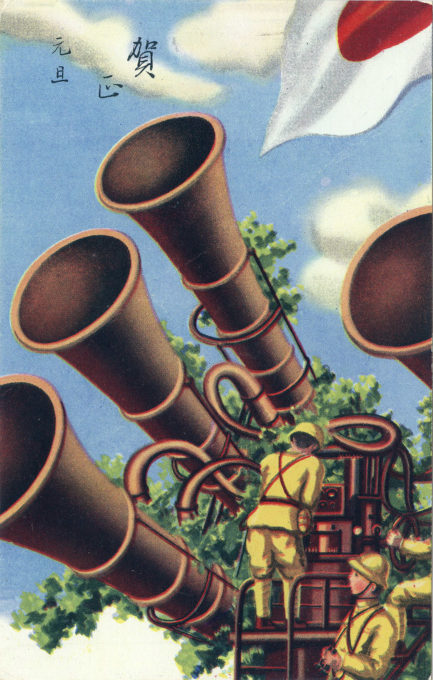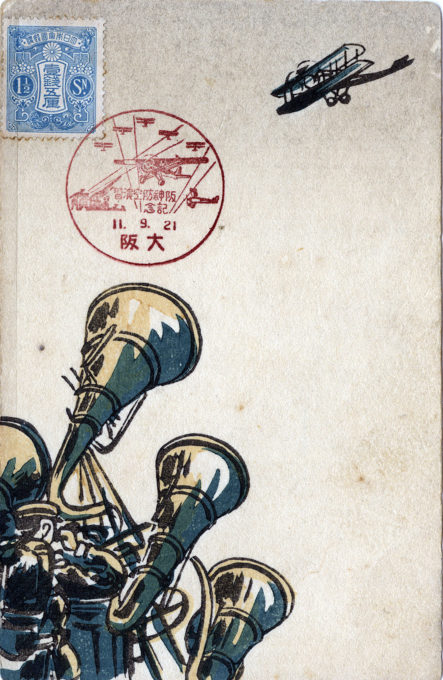
“War tuba” acoustic detection array, propaganda postcard, c. 1935. Passive acoustic location involves the detection of sounds or vibrations created by the object being detected, which are then analyzed to determine the location of the object in question. The first use of this type of equipment was claimed in England by Commander Alfred Rawlinson of the Royal Naval Volunteer Reserve, who in the autumn of 1916, needed a means of locating German Zeppelins during cloudy conditions and who improvised an apparatus from a pair of gramaphone horns mounted on a rotating pole.
War tuba
noun
1. An acoustic locator, vaguely resembling a tuba, used (by Japan during the World Wars) to provide early warning of incoming aircraft.
“Acoustic location is the technology of identifying the location of objects by detecting sound waves they emit. It was quickly adopted by the military in the early 1900s as a way of locating aircraft and submarines.
“Despite being short-lived – the technology was quickly made obsolete by increases in aircraft speeds and the development of electronic radars – the contraptions, which typically involved large horns connected to the operator’s ears, made for some surreal imagery.
“In Japan especially, the oversized ‘Type 90 Large Air Sound Detector’ took on the nickname ‘War Tuba’ after an incredible photo that originally appeared in LIFE magazine in 1936, resurfaced. In the photograph, Emperor Hirohito and possibly Hideki Tojo can be seen inspecting the acoustic locators mounted on 4-wheel carriages.
“These acoustic location devices were, of course, used in other countries besides Japan.”
– Fascinating Historic Photos of Japan’s Wartime Acoustic Locators, Spoon-Tamago.com, July 20, 2016


